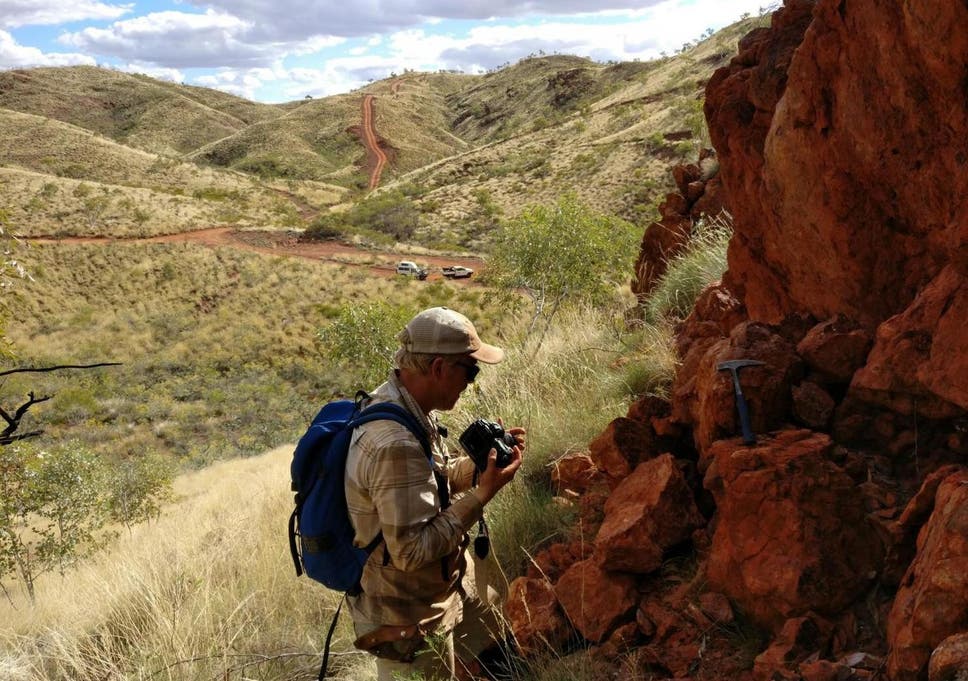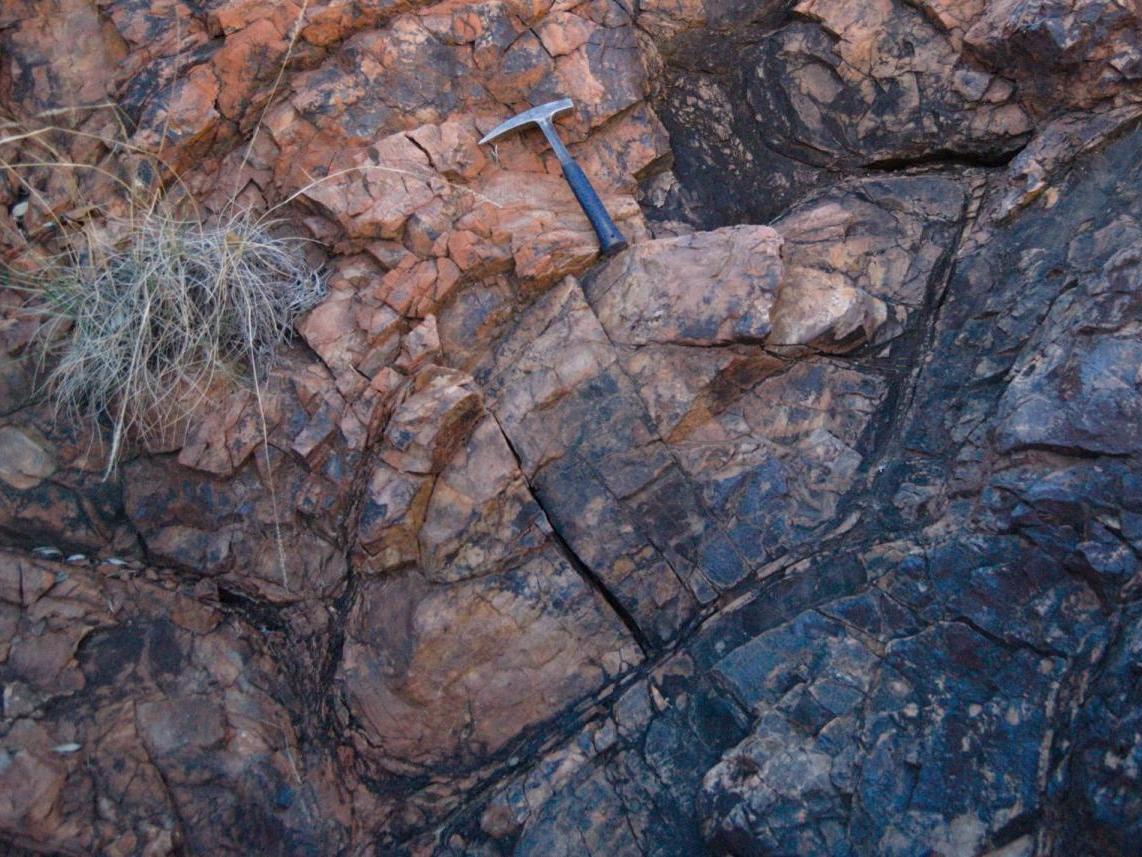Discovery could help scientists understand how and where single-cell organisms first emerged
Kate Ng

Lead author Benjamin Johnson inspects a rock outcrop near the site of an ancient hydrothermal vent in the Panorama district ( Jana Meixnerova )
The ancient Earth may once have been completely covered in water, new research suggests.
In a study published in Natural Geoscience, researchers examined a chunk of ocean crust located in northwestern Australia’s outback that is approximately 3.2 billion years old.
The geologic site, called the Panorama district, provided clues about the chemistry of ocean water from billions of years ago.
It could also help scientists understand how and where single-cell organisms first emerged on earth.
Lead author Benjamin Johnson and co-author Boswell Wing analysed data from more than 100 rock samples across the terrain to search for two different isotopes of oxygen trapped in the stone.

A pillow basalt formation made up an ancient seafloor 3.2 billion years ago (Benjamin Johnson)
Mr Wing, of the University of Colorado Boulder, said in a news release: “The history of life on Earth tracks available niches. If you’ve got a waterworld, a world covered by ocean, then dry niches are just not going to be available.”
Mr Johnson, who is a postdoctoral fellow in the same university, added: “Today, there are these really scrubby and rolling hills that are cut through by dry river beds. It’s a crazy place.
“There are no samples of really ancient ocean water lying around but we do have rocks that interacted with that seawater and remembered that interaction.”
He described the process as similar to analysing coffee ground to gather information about the water that was poured through them.
In their findings, the duo discovered the ratio of the two isotopes, Oxygen-18 and Oxygen-16, present in the rocks today may have been just slightly off in the seawater 3.2 billion years ago.
Mr Wing said though the mass differences seemed small, they were “super sensitive” to the presence of continents.
Independent news email
Only the best news in your inbox
Continue
Register with your social account or click here to log in
I would like to receive morning headlinesMonday - Friday plus breaking news alerts by email
The team’s theory is that the excess Oxygen-18 in the ancient seawater could be explained by the lack of soil-rich continents to absorb the heavier Oxygen-18 isotopes at the time.
However, there may have been some dry spots of land around.
Mr Wing said: “There’s nothing in what we’ve done that says you can’t have teeny, micro-continents sticking out of the oceans.
“We just don’t think that there were global-scale formation of continental soils like we have today.”
The study does not answer the question of when tectonic plates began pushing masses of rocks that eventually became continents, but Mr Wing and Mr Johnson said they plan to study younger rock formations from Arizona to South Africa to try and determine that.
Mr Johnson said: “Trying to fill that gap is really important
---30---
No comments:
Post a Comment